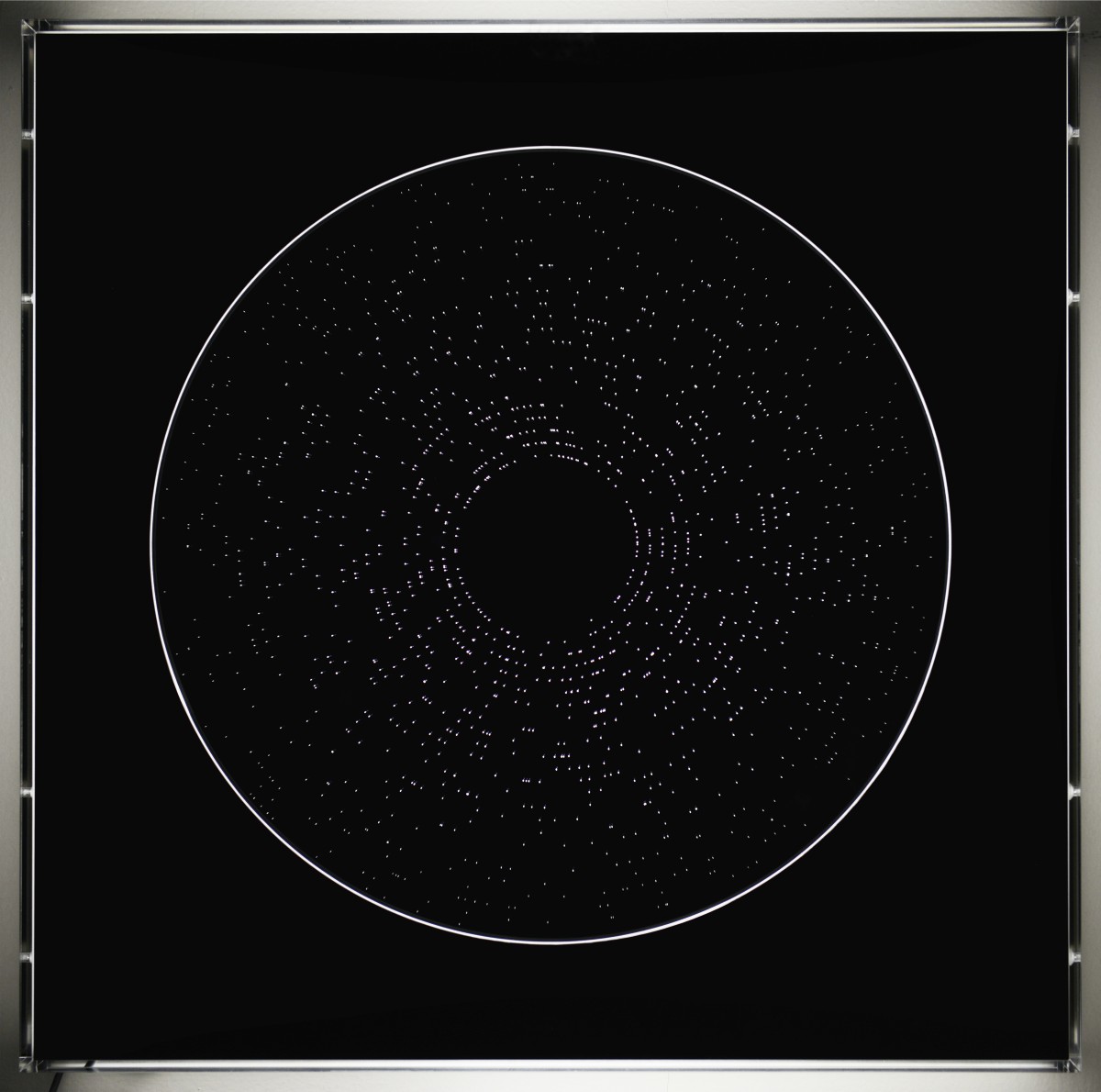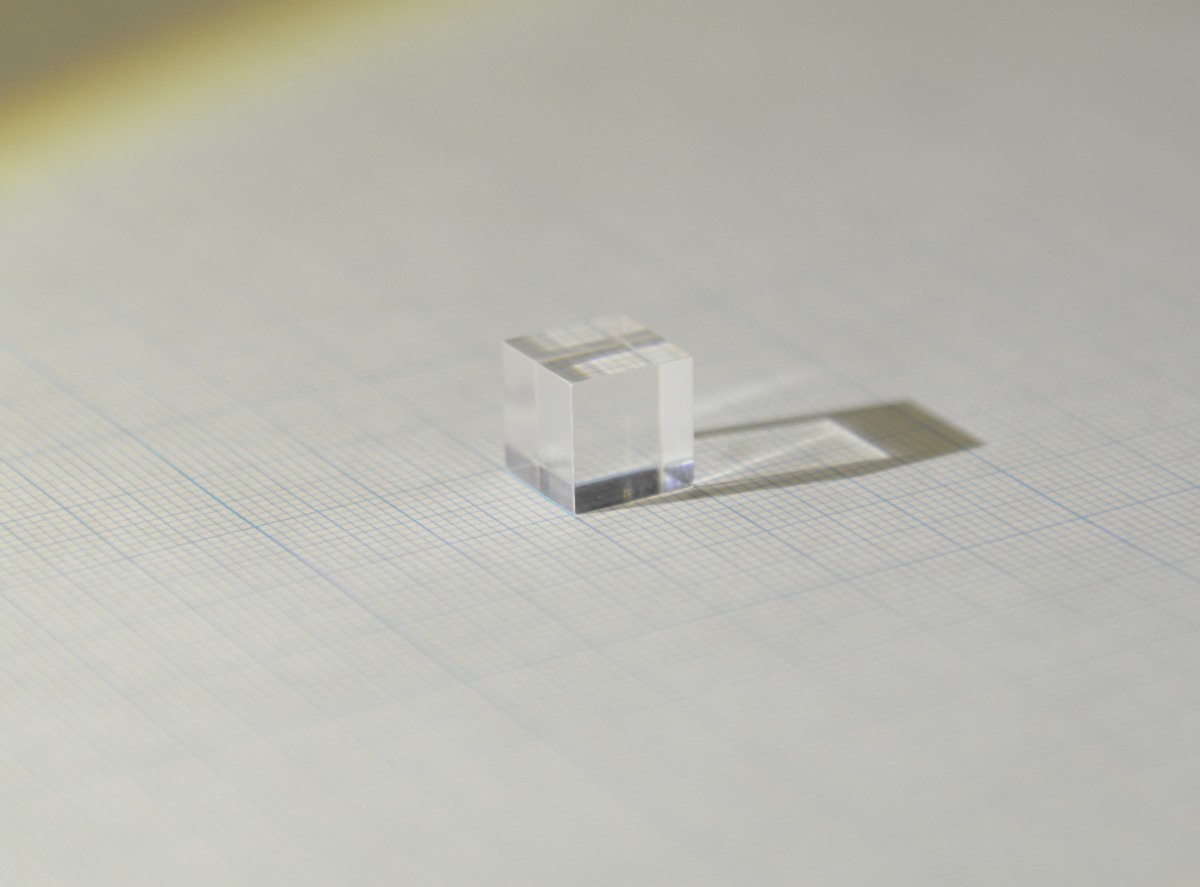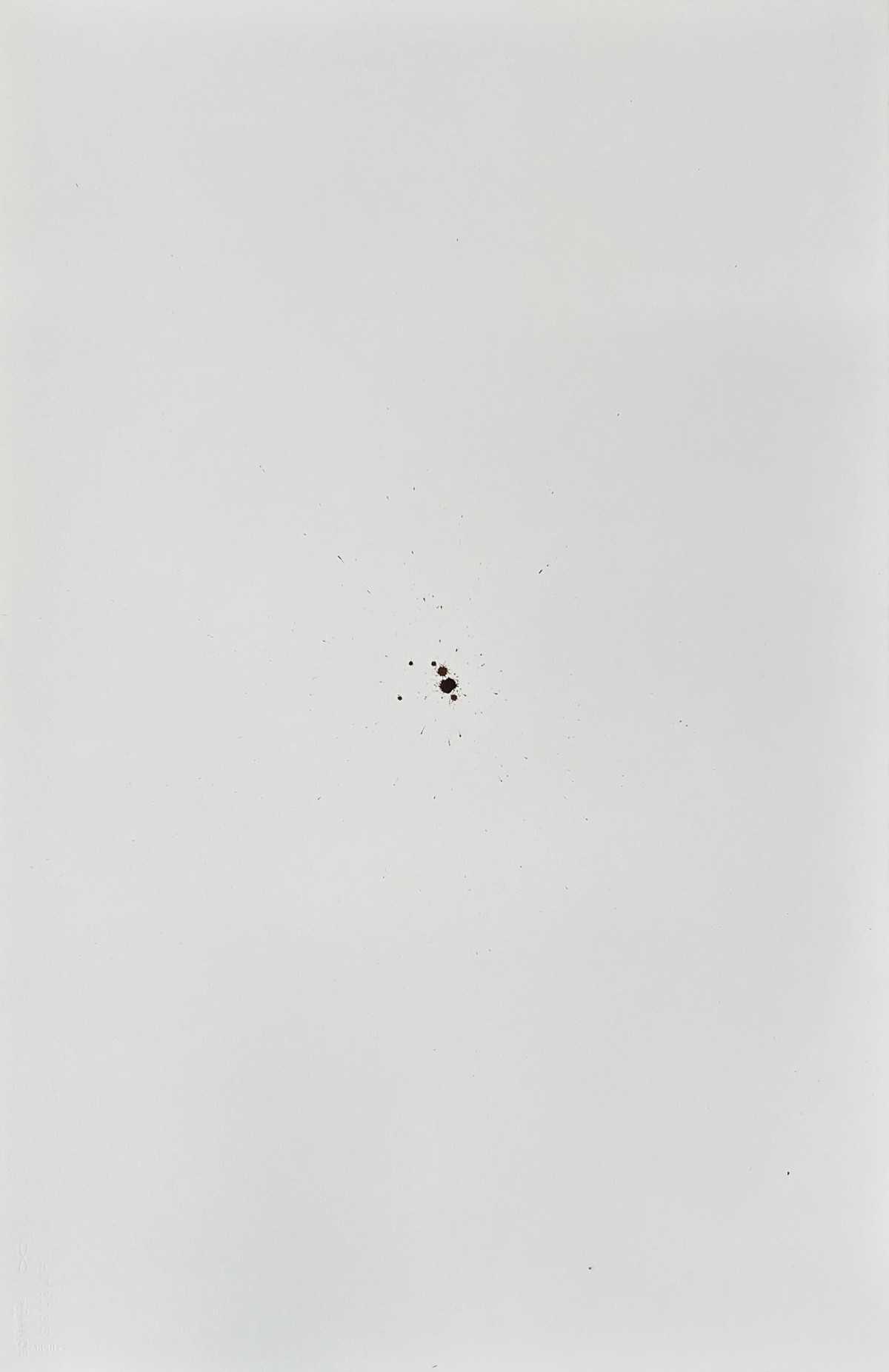
Shimizu Jio, Mirror (Recorded 31 Dec 2024 – 1 Jan 2025), 2024-2025, Mirror, aluminum plate, LED, acrylic box, Φ38cm, Framed 50 x 50 x 8 cm
Shimizu Jio
Radius
June 21 – July 19, 2025
Opening Reception: Saturday, June 21, 17:00-19:00
Tuesday-Saturday 12:00-19:00 (Closed on Mon, Sun, Public holidays)
Press Release
Download Press release (日本語)
Download Press release (English)
MISA SHIN GALLERY is pleased to present Radius, a solo exhibition by Shimizu Jio, on view from Saturday, June 21 through Saturday, July 19, 2025.
Shimizu has long explored the realm of imperceptible physical phenomena that lie beyond the reach of human senses or awareness, working at the intersection of art and natural science. In this exhibition, he unveils a series of new installations, drawings, and photographs themed around extraterrestrial substances such as cosmic rays and meteorites.
The title Radius derives from Latin, originally referring to a rod used in ancient Rome for measuring circles. Over time, its meaning expanded to include “radius” and “radiation,” and it eventually became the root for many radiation-related terms as well as “radio.” Imbued in this term is an image of linear force or energy radiating outward from a single point. Metaphorically, it also signifies scope or influence.
In Radius, Shimizu focuses on two phenomena: cosmic rays—high-energy particles continuously generated somewhere in the universe—and the reality that they incessantly rain down on Earth, interacting with our bodies and environment in real time. Although we are constantly exposed to these phenomena, they rarely register in our consciousness.
Using 1cm³ scintillators*1, Shimizu attempts to detect cosmic rays and visualize their moment of arrival through a unique device that etches dots onto the reverse side of a mirror. Each 38cm-diameter mirror disc records 24 hours of cosmic ray events. These accumulations continue to build throughout the exhibition period. Based on the floor area of MISA SHIN GALLERY, it is estimated that over 480,000 cosmic ray hits occur per minute—highlighting the physical and poetic reality of this otherwise invisible occurrence.
This work builds upon Decay Music (2016–), a collaborative sound installation developed by Shimizu and Iida Hiroyuki, whom he worked with at the Wrk label, following the 2011 Great East Japan Earthquake and Fukushima Daiichi nuclear disaster. In that project, a sonic apparatus converted radiation energy into musical tones; occasional high-pitched notes*2 were assumed to correlate with cosmic ray strikes. In Radius, Shimizu takes that original concept and reimagines it through a visual medium.
Shimizu also presents drawing works using meteorite fragments ground into pigment. The dripping method of applying these pigments with a dropper onto paper serves both as an homage to Jackson Pollock’s drip technique and as a nod to chance operations. Despite identical conditions for each drip, the differing coarseness and weight of the meteorite particles prevent uniform results—each drop diverges in shape and placement. These gestures of meteorites falling under gravity recreate, on a micro scale, the kind of cosmic collisions that once shaped the moon or triggered the extinction of dinosaurs. They are attempts to connect minimal gestures to cosmic scale.
In addition to the Collision series (1994–), which uses meteorites sourced from Morocco, the Czech Republic, Russia, Australia, and the United States, the exhibition will include a work from star while day time (1992–), a series that uses auto-tracking systems to follow stars invisible during the day.
“Cosmic rays are constantly raining down on us. Though their origin remains a mystery, they are believed to be closely tied to the origins of the universe. Devices installed deep beneath Antarctic ice, in the mountains of Gifu, and across high plateaus around the world continue their observations in search of answers.
There is no clear boundary between the cosmos and our daily life. Particles traveling across tens of thousands of light-years are ceaselessly passing through our bodies.”
— Shimizu Jio
The artist will be present for the opening reception on the first day.
We warmly welcome your visit.
Notes
*1 Scintillator: A material that emits light when it absorbs ionizing radiation.
*2 A rare, high-pitched tone corresponding to a very high energy level.

Shimizu Jio, 1cm³, 2025, Scintillator, 1 x 1 x 1 cm

Shimizu Jio, Collision: USA Texas 1917, 2025, Meteorite, acrylic medium on Arches paper, 110 x 65 cm

Shimizu Jio, Collision: Europe Czech Moldau River 1787, 2025, Meteorite, acrylic medium on Arches Paper, 110 x 65 cm

Shimizu Jio, Collision: Australia 1941, 2025, Meteorite, acrylic medium on Arches Paper, 110 x 65 cm

Shimizu Jio, Star While Day Time Schedar (α Cassiopeiae) 00:41.1+56°35 55°41’26.99”N 12°34’17.01”E 40M 15H 24D 04M 2009Y, 2009, Inkjet print mounted on aluminum, 100 x 65 cm
Shimizu Jio
Born in Tokyo in 1966. Currently based in Hiroshima and Saitama. Completed his MFA at Tokyo University of the Arts. From 1994 to 2006, participated in the sound label “WrK.” From 2008 to 2010, Shimizu was based in Copenhagen under Japan’s Agency for Cultural Affairs’ Overseas Study Program for Emerging Artists. Selected exhibitions include: Roppongi Crossing (Mori Art Museum, Tokyo, 2004), Busan Biennale (Busan, 2008), Japanese Sound Art (Roskilde Museum of Contemporary Art, Copenhagen, 2011), On the Edge International Art Festival (Norway, 2012), Sound Reasons (Queen’s Gallery, New Delhi, 2012), Open Space 2014 (NTT ICC, Tokyo, 2014–15), Re-actions (Mitsubishi Estate Artium, Fukuoka, 2017), 21st Japan Media Arts Festival (The National Art Center, Tokyo, 2018), and Setouchi Triennale 2019.
